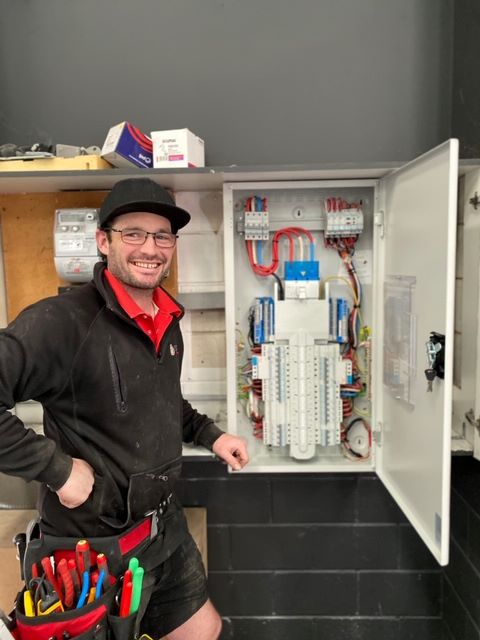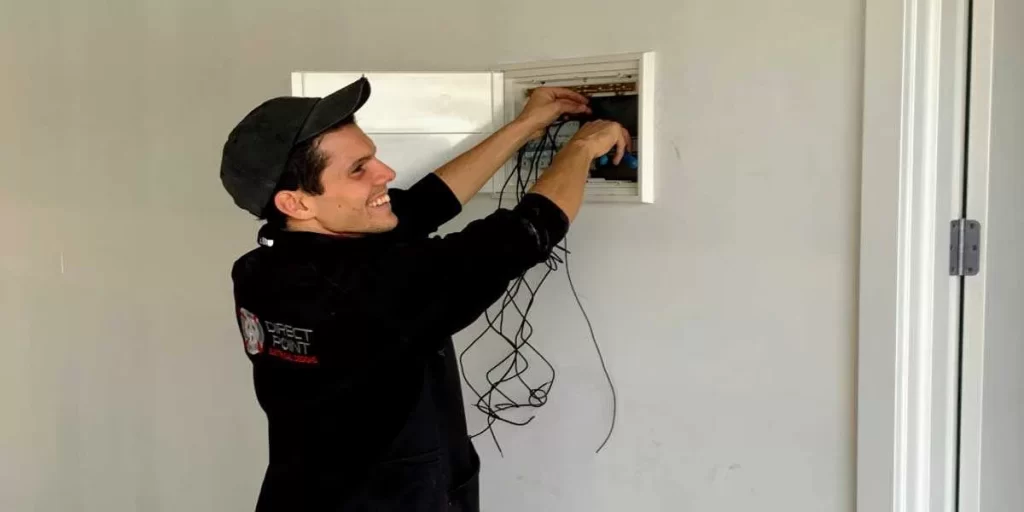When planning electrical installations for your home or commercial space, a common question arises regarding the necessity of a main breaker in a sub panel. This inquiry typically surfaces as property owners assess their options to upgrade their electrical systems or introduce new circuits to meet the escalating power demands of modern appliances. Understanding the function and requirements of sub panels is crucial for creating a safe, reliable, and efficient electrical framework.
In most scenarios, a sub panel does not necessitate a main breaker since it draws power from the main panel, which is already equipped with a main breaker controlling the total power supply. The breaker in the main panel acts as the primary disconnect for the entire electrical system, encompassing all sub panels. Nevertheless, particular local electrical codes or specific installation demands might necessitate a main breaker in sub panels, especially for enhanced safety or operational convenience. Always verify your local regulations to ensure adherence and safety.
While not universally mandated, incorporating a main breaker in your sub panel can provide numerous advantages. It offers a swift and simple method for cutting power to all circuits within that specific panel without disrupting the entire electrical system. This feature is particularly beneficial during maintenance tasks or emergencies, allowing for the safe isolation of different segments of your property’s electrical network, thereby enhancing safety and facilitating access in critical situations.

Explore the Critical Functions and Advantages of Sub Panels
Sub panels are integral components of electrical systems, facilitating efficient power distribution to specific areas or appliances within a property. They significantly enhance the control and organization of circuits while increasing the overall capacity to manage electrical loads effectively. By strategically positioning sub panels, property owners can optimize their electrical infrastructure, ensuring that it meets the diverse demands of various appliances and equipment with ease and reliability.
Delve into the Importance of Sub Panels: Their Key Functions and Perks
A sub panel, often referred to as a subsidiary panel or distribution board, serves as an additional electrical panel that branches off from the main electrical panel. Its primary function is to act as a secondary distribution point for electricity throughout a building, providing flexibility and enhanced efficiency. Sub panels are typically installed to:
- Improve circuit capacity for a wide range of applications and equipment.
- Isolate power supply to specific areas or devices for enhanced safety and convenience.
- Facilitate better organization and management of the overall electrical system.
Common locations for sub panels include garages, workshops, or larger homes where the main panel may be situated far from certain areas that require power. By installing sub panels, property owners can achieve more efficient power distribution, simplifying circuit management and making it easier to access and control their electrical infrastructure.
Crucial Aspects to Assess for Electrical Load Requirements Before Sub Panel Installation
Prior to embarking on a sub panel installation, it is imperative to thoroughly evaluate the electrical load requirements. Key factors to consider include:
- The total amperage required for the designated area or equipment.
- The number and types of circuits needed for specific applications.
- The distance from the main panel to the selected sub panel location.
Calculating the anticipated load is vital to ensure that the sub panel can safely accommodate it. Typically, sub panels are available in capacities ranging from 60 to 200 amps, depending on their intended purpose. Matching the sub panel's capacity to your specific electrical needs is crucial for both efficiency and safety. Furthermore, considering potential future expansions when determining the size of your sub panel can save time and costs, preventing the need for upgrades or replacements as your electrical demands evolve.

Essential Elements for Ensuring Safe and Effective Sub Panel Installation
To guarantee a safe and efficient installation of a sub panel, several critical considerations must be addressed, including circuit breakers, adherence to regulatory standards, and the implementation of necessary safety measures. Understanding these installation requirements is crucial for establishing a safe and compliant electrical system.
Evaluating the Need for Circuit Breakers in Sub Panels
While sub panels do not always necessitate a main breaker, this requirement can vary based on specific circumstances, such as:
- The distance from the main panel: A local disconnect may be essential if the sub panel is situated far from the main panel.
- The number of circuits: Sub panels equipped with more than six breakers typically require a main breaker to enhance safety.
- Local codes: Some jurisdictions mandate the installation of main breakers in all sub panels.
A main lug sub panel depends on the main breaker from the main panel for overcurrent protection, which is common when the sub panel is located in close proximity to the main electrical panel. Understanding the specific needs of your installation is vital for ensuring compliance and safety.
Understanding Regulatory Standards for Sub Panel Installations
In Australia, specific electrical standards govern the installation of sub panels, including:
- AS/NZS 3000: This standard outlines the comprehensive requirements for all electrical installations.
- Maximum rating: Main breakers for sub panels must not exceed the ampacity of the feeder conductors to ensure safe operation.
- Labelling: Clear identification of the power source for the sub panel is a mandatory requirement.
Adhering to these standards is essential for guaranteeing safety and legal operation. It is highly recommended to consult local authorities for specific regional requirements, and remember that all electrical work must be conducted by a licensed electrician to ensure compliance and safety!

Implementing Vital Safety Measures for Sub Panel Installations
Implementing robust safety measures during sub panel installations is essential to mitigate electrical risks and ensure operational safety:
- Proper grounding: Ensure that the sub panel is effectively grounded to minimize the risk of electrical shocks.
- Adequate spacing: Maintain sufficient clearance around the panel to facilitate easy access and adequate ventilation.
- Weatherproofing: For installations located outdoors, utilize weather-resistant enclosures to protect against moisture and environmental factors.
Additionally, it’s crucial to utilize the correct wire sizes and types tailored to the expected load. Installing arc fault circuit interrupters (AFCIs) and ground fault circuit interrupters (GFCIs) in accordance with code requirements is also vital for safety. Regular inspections and maintenance of the electrical installation significantly contribute to ongoing safety and compliance. Always engage a licensed electrician for sub panel installations to ensure that all safety standards are rigorously adhered to.
Explore Common Questions About Sub Panels and Main Breakers
The intricacies surrounding sub panels, including considerations about breakers, sizing, and regulations, can be daunting for property owners. Gaining a clear understanding of the essential requirements is crucial for ensuring a safe and compliant electrical setup that meets all local codes and safety standards.
Is a Main Breaker Mandatory for Every Sub Panel?
A sub panel does not necessarily require a main breaker. The necessity largely hinges on its location relative to the main panel and the local electrical codes. If the sub panel is situated within the same building as the main panel, a main breaker is typically not a requirement.
However, if the sub panel is located in a separate structure, it generally must include a main breaker for safety and compliance reasons, ensuring that all electrical installations adhere to local regulations.
Can a Main Breaker Panel Function as a Sub Panel?
Yes, a main breaker panel can serve as a sub panel, although it may not always be the most efficient choice. In this scenario, the main breaker would act as an additional disconnect point, rather than the primary disconnect for the electrical system.
Generally, opting for a panel specifically designed as a sub panel is often more cost-effective and space-efficient, providing enhanced functionality for your electrical needs.
What Size Breaker is Appropriate for a 100 Ampere Sub Panel?
For a 100 ampere sub panel, it is standard practice to use a 100 ampere breaker in the main panel to supply it. This breaker should align with the sub panel's rating to ensure optimal protection and functionality, providing a reliable power supply.
Moreover, the wire size must also be adequate for handling a 100 ampere load, ensuring that the entire electrical system operates safely and effectively.
What Regulations Govern Electrical Sub Panels?
Electrical sub panel regulations can differ by region, but they primarily focus on safety and accessibility. Key regulations typically encompass:
- Proper grounding and bonding procedures to enhance safety.
- Correct wire sizing to effectively accommodate anticipated loads.
- Adequate spacing around the panel to ensure accessibility and safety.
- Clear labelling of all circuits within the panel for better management.
Always refer to local codes and consider professional installation to ensure full compliance with all regulations, creating a safe electrical environment.
What is the Capacity Limit for a Sub Panel Connected to a 200 Ampere Main Panel?
A sub panel linked to a 200 ampere main panel does not come with a fixed capacity limitation. The size of the sub panel depends on several factors, including:
- The available capacity in the main panel to support additional loads.
- The intended load requirements for the sub panel based on its usage.
- The wire size employed between the panels, ensuring it can handle the load safely.
It is feasible to install a 100 or 150 ampere sub panel, provided that the main panel has sufficient spare capacity to support it, offering flexibility for future needs.
How Does One Accurately Size a Breaker for a New Sub Panel Installation?
To effectively size a breaker for a new sub panel, adhere to these steps:
- Calculate the total load that the sub panel is expected to support, considering all connected devices.
- Select a panel that is rated for that load or higher to ensure safety.
- Choose a breaker in the main panel that aligns with the sub panel’s rating for optimal performance.
It is prudent to consider future expansion needs when sizing the panel. Often, installing a slightly larger panel than currently required can provide additional flexibility for accommodating future electrical demands, making your system more adaptable.
The Article: Does a Main Breaker Need to Be in a Sub Panel? first appeared on https://writebuff.com
The Article Main Breaker Requirements for Sub Panels Explained Was Found On https://limitsofstrategy.com





No responses yet